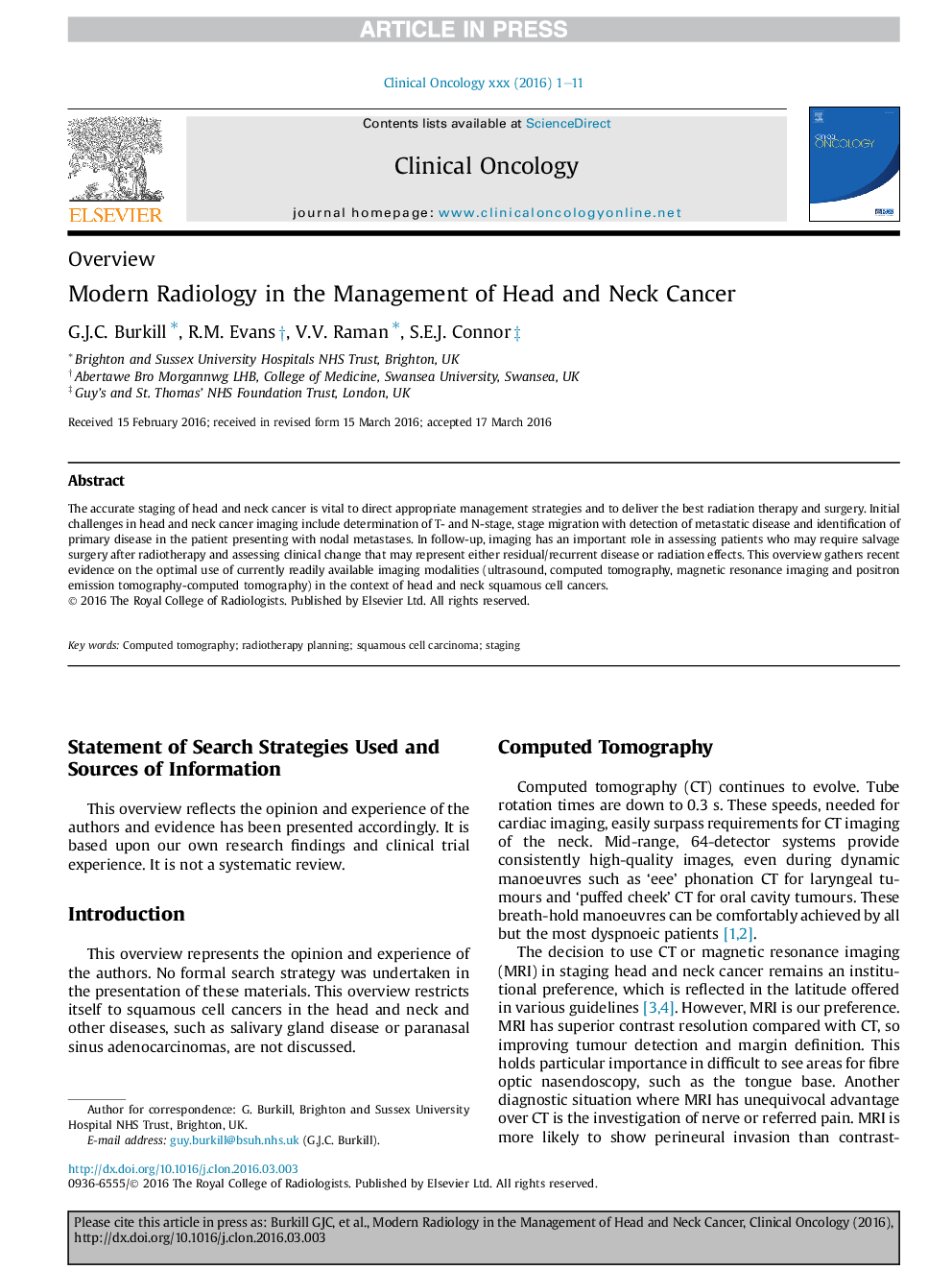| Article ID | Journal | Published Year | Pages | File Type |
|---|---|---|---|---|
| 5697988 | Clinical Oncology | 2016 | 11 Pages |
Abstract
The accurate staging of head and neck cancer is vital to direct appropriate management strategies and to deliver the best radiation therapy and surgery. Initial challenges in head and neck cancer imaging include determination of T- and N-stage, stage migration with detection of metastatic disease and identification of primary disease in the patient presenting with nodal metastases. In follow-up, imaging has an important role in assessing patients who may require salvage surgery after radiotherapy and assessing clinical change that may represent either residual/recurrent disease or radiation effects. This overview gathers recent evidence on the optimal use of currently readily available imaging modalities (ultrasound, computed tomography, magnetic resonance imaging and positron emission tomography-computed tomography) in the context of head and neck squamous cell cancers.
Related Topics
Health Sciences
Medicine and Dentistry
Oncology
Authors
G.J.C. Burkill, R.M. Evans, V.V. Raman, S.E.J. Connor,
